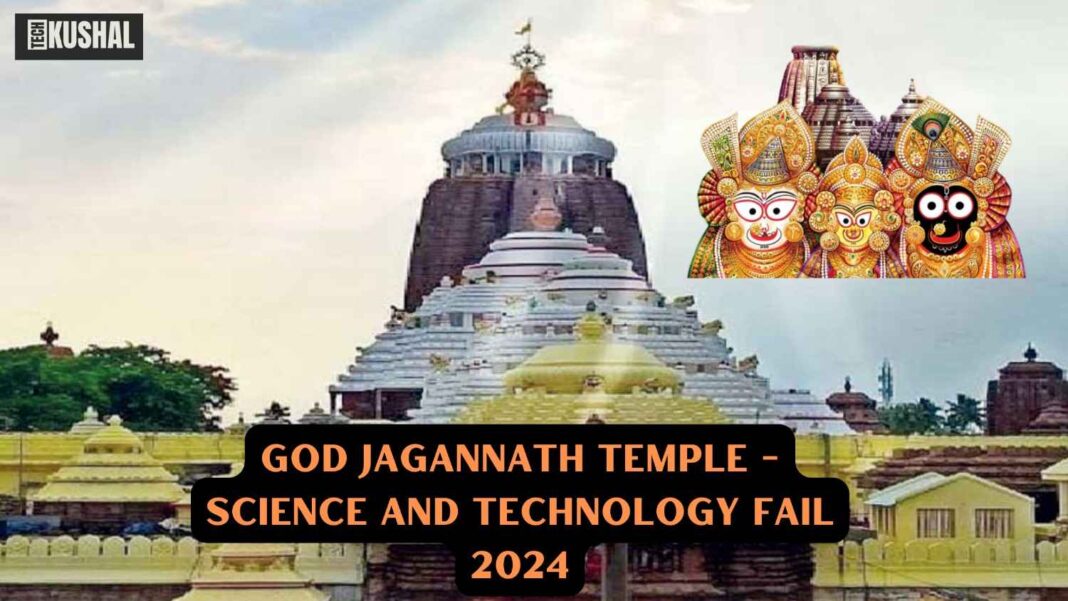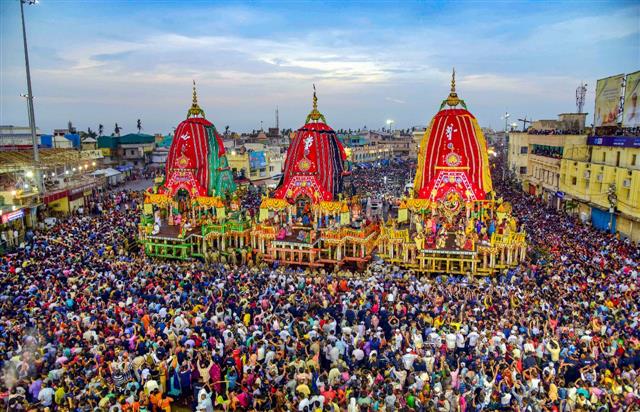
God Jagannath Temple, The Jagannath Temple, located in Puri, Odisha, India, is a marvel of ancient architecture and religious devotion. This temple, dedicated to Lord Jagannath, an incarnation of Lord Vishnu, stands as a testament to the rich cultural and spiritual heritage of India. Despite the advancements in science and technology, there are numerous phenomena associated with the Jagannath Temple that continue to baffle experts. These mysteries highlight the limitations of our current scientific understanding and underscore the profound wisdom embedded in ancient practices.
Read More: Jai Jagannath Cartoon Series 2024 Review: Captivating Fun
The Defiance of Natural Laws
The Flag That Defies Wind Direction
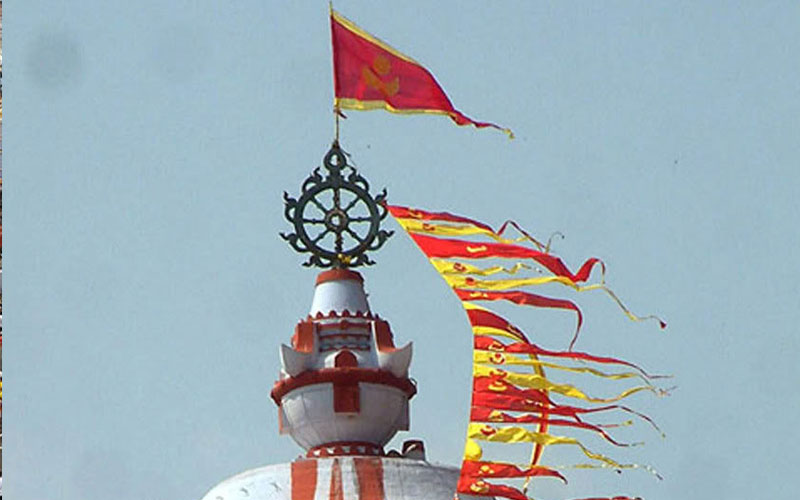
One of the most astonishing phenomena observed at the Jagannath Temple is the flag atop the main dome that always flutters in the opposite direction of the wind. This phenomenon contradicts the basic principles of aerodynamics and has left many scientists scratching their heads. The flag, known as the Patitapaban Bana, is changed daily by a priest who climbs the dome without any safety equipment, a ritual that has been performed for centuries.
The Mystery of the Sudarshana Chakra
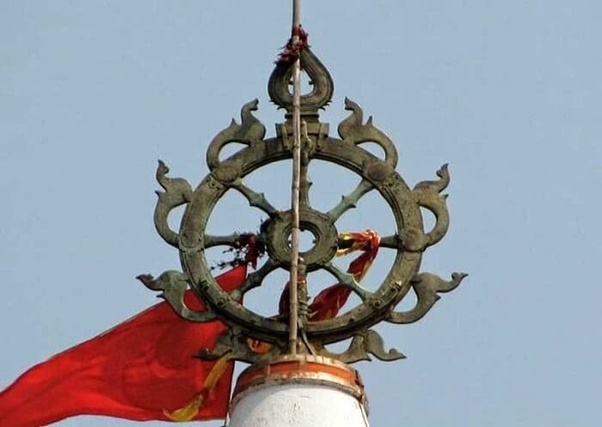
The Sudarshana Chakra, a prominent wheel on top of the temple, presents another enigma. Regardless of where one stands in Puri, the chakra always seems to face the viewer. This optical illusion defies logical explanation and has been a subject of fascination for both devotees and tourists alike. The chakra, made of eight different metals, is not just a religious symbol but also a remarkable example of ancient Indian metallurgy.
Architectural Marvels Beyond Modern Understanding
The Shadowless Structure
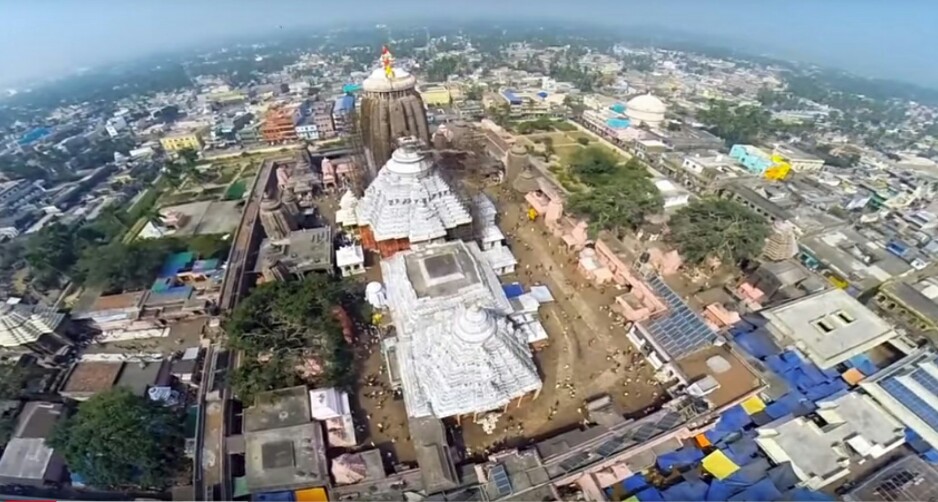
During any time of the day, the main dome of the Jagannath Temple does not cast a shadow. This architectural feat is perplexing, given that shadows are a natural consequence of sunlight hitting solid objects. Modern architects and scientists have yet to fully understand how the ancient builders achieved this shadowless effect. Some theories suggest the unique positioning of the temple, while others attribute it to advanced knowledge of light and shadow manipulation.
The Non-Rusting Iron Pillar
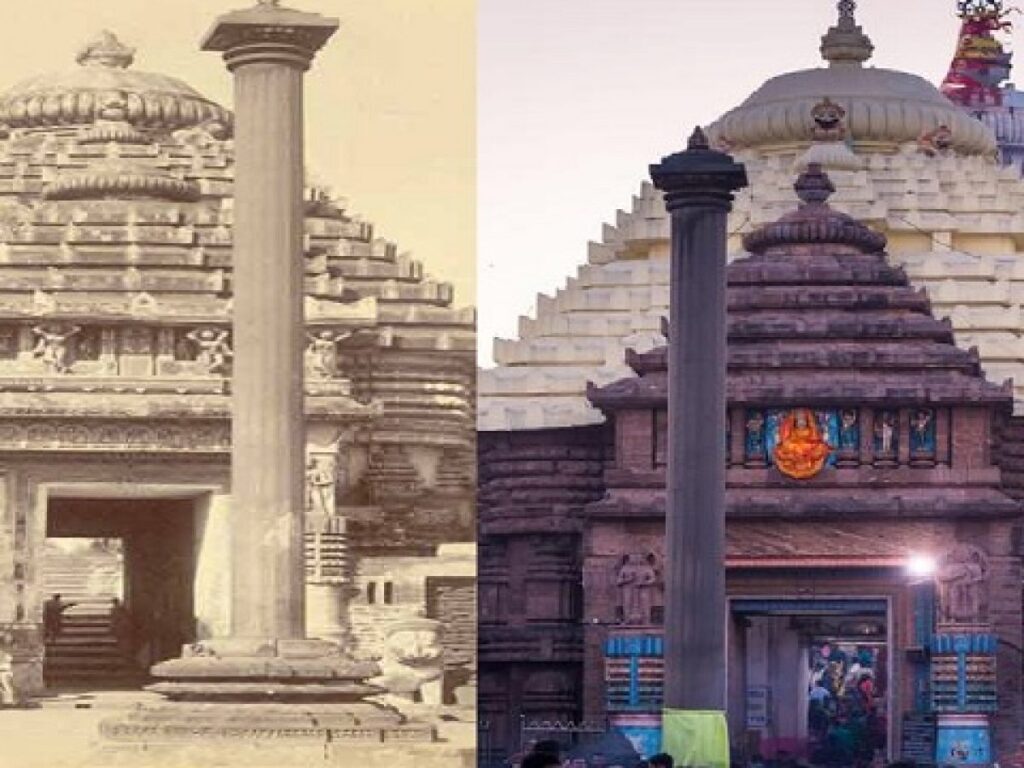
Inside the temple complex, there exists an iron pillar that has withstood the ravages of time and weather for over a thousand years without rusting. This is particularly intriguing because iron is highly susceptible to corrosion. The composition and treatment of the iron pillar suggest a sophisticated understanding of materials science that modern technology is still striving to achieve.
Acoustic Wonders of the Temple
The Emanating Sound of the Sea

Another striking feature of the Jagannath Temple is the sound phenomenon observed at the temple’s main entrance, the Singhadwara. Standing at this entrance, one cannot hear the sound of the ocean waves, even though the temple is located close to the sea. However, as soon as one steps inside the temple, the sound of the waves becomes distinctly audible. This selective acoustic phenomenon remains unexplained by current scientific principles.
The Mystical Sounds in the Garbhagriha

The inner sanctum, or Garbhagriha, of the Jagannath Temple is believed to emit mystical sounds, which are perceived as the heartbeat of Lord Jagannath. These sounds are particularly noticeable during the early morning hours and are considered to be a divine presence by devotees. Scientists have attempted to record and analyze these sounds, but no conclusive explanations have been reached.
Rath Yatra: A Phenomenon of Unseen Forces
The Immovable Chariot
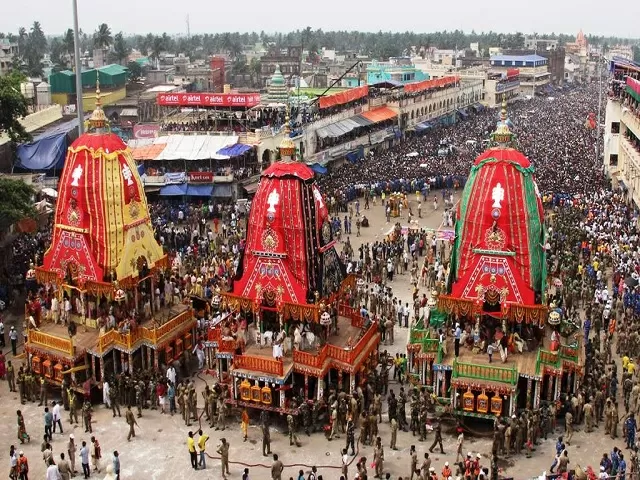
The annual Rath Yatra, or Chariot Festival, is another event that underscores the mysterious forces at play in the Jagannath Temple. During this festival, the massive chariot of Lord Jagannath is pulled by devotees through the streets of Puri. Despite its enormous weight, the chariot moves effortlessly when pulled by devotees but resists movement when non-devotees attempt to pull it. This selective movement raises questions about the influence of collective faith and unseen forces.
The Self-Stabilizing Chariot
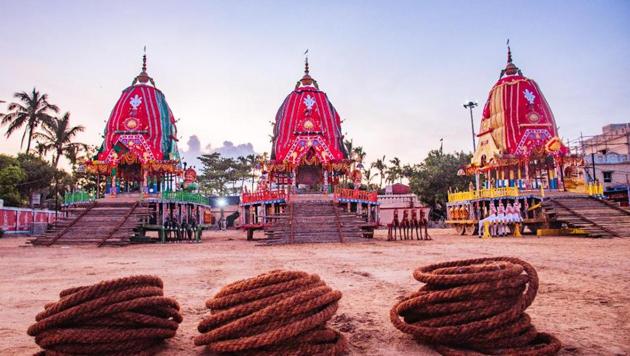
Additionally, the chariots used in the Rath Yatra are known for their stability. Despite their height and the uneven terrain of Puri’s streets, the chariots do not topple over. This remarkable balance is achieved without the use of modern engineering techniques, showcasing the ingenuity of ancient craftsmanship.
Unexplained Rituals and Practices
The Cooking of Mahaprasad

The Mahaprasad, or the sacred food offered to Lord Jagannath, is cooked in earthen pots over firewood. Remarkably, these pots are stacked in such a way that the pot at the top cooks first, followed by the ones below it. This defies the conventional understanding of heat transfer and thermodynamics. Despite numerous attempts to replicate this cooking method outside the temple, success has remained elusive, further adding to the mystique of the temple’s practices.
The Preservation of Food
Food offered to Lord Jagannath, even when left in the temple for days, does not spoil. This phenomenon contradicts basic principles of food preservation and microbiology. The exact methods used to achieve this are unknown, and the temple authorities attribute it to divine intervention.
Conclusion: The Intersection of Faith and Mystery
The Jagannath Temple stands as a profound example of the intersection between faith and mystery. While science and technology have advanced significantly, there are still aspects of our world that elude rational explanation. The phenomena associated with the Jagannath Temple challenge our understanding and invite us to explore the deeper dimensions of ancient wisdom and spirituality.
FAQs
1. Why does the flag atop the Jagannath Temple defy wind direction?
The flag atop the Jagannath Temple flutters in the opposite direction of the wind, a phenomenon that contradicts basic aerodynamics. Despite extensive studies, scientists have yet to determine the exact cause of this behavior.
2. How does the Sudarshana Chakra always face the viewer?
The Sudarshana Chakra atop the temple appears to face the viewer from any angle. This optical illusion remains unexplained, with theories suggesting it could be due to the unique design and reflective properties of the chakra.
3. Why doesn’t the main dome of the temple cast a shadow?
The main dome of the Jagannath Temple does not cast a shadow at any time of the day. The exact reason for this shadowless effect is still unknown, although it may involve advanced ancient knowledge of light and shadow manipulation.
4. What prevents the iron pillar inside the temple from rusting?
The iron pillar inside the temple has resisted rusting for over a thousand years. Metallurgical analysis suggests a unique alloy composition and surface treatment, but modern science has not been able to replicate its corrosion resistance.
5. What causes the selective sound phenomenon at the Singhadwara?
At the Singhadwara entrance, the sound of the ocean waves is inaudible outside the temple but becomes clear inside. This selective acoustic phenomenon remains unexplained by current scientific principles.
6. What is the source of the mystical sounds in the Garbhagriha?
The Garbhagriha emits mystical sounds perceived as the heartbeat of Lord Jagannath. Despite efforts to record and analyze these sounds, no conclusive scientific explanation has been found.
7. Why do the chariots in the Rath Yatra exhibit selective movement?
The chariots move effortlessly when pulled by devotees during the Rath Yatra but resist movement when non-devotees attempt to pull them. This selective movement remains a mystery and may be influenced by collective faith and unseen forces.
8. How do the chariots remain stable despite their size and weight?
The chariots used in the Rath Yatra maintain remarkable stability without modern engineering techniques. This balance is attributed to ancient craftsmanship, though the exact methods are not fully understood.
9. How is Mahaprasad cooked with the top pot cooking first?
Mahaprasad is cooked in earthen pots stacked in such a way that the top pot cooks first, defying conventional heat transfer principles. Attempts to replicate this cooking method outside the temple have been unsuccessful.
10. Why doesn’t food offered to Lord Jagannath spoil?
Food offered to Lord Jagannath does not spoil even after several days. The exact methods for achieving this are unknown, with temple authorities attributing it to divine intervention.
